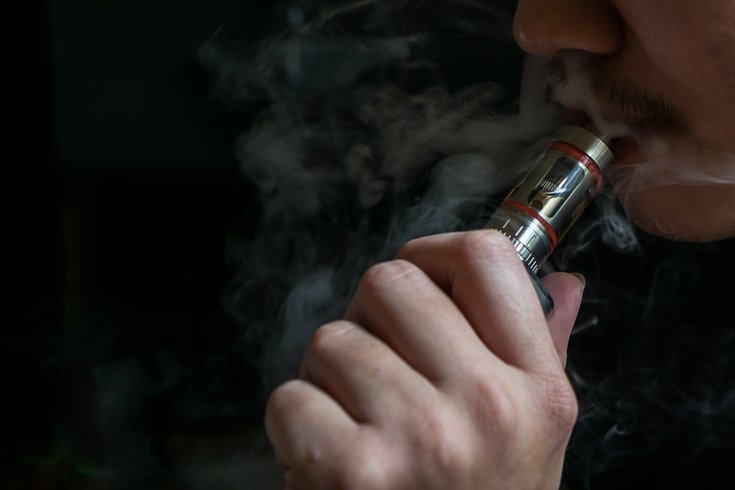
August 12, 2020
 Source/Image licensed from Ingram Image
Source/Image licensed from Ingram Image
Teenagers and youth who vape are more likely to contract COVID-19, a Stanford study finds. The damage to their lungs may make them more susceptible to the coronavirus, researchers say.
New research emphasizes the dangers of vaping during the COVID-19 pandemic, finding teenagers and young adults who vape at greater risk of contracting the coronavirus.
Teenagers and young adults who use e-cigarettes are five times more likely to be diagnosed with COVID-19, Stanford University researchers found. Those who both vape and smoke traditional cigarettes are seven times more likely.
Still, researchers stressed that the relationship is not causal. But it is clear that vaping is a risk factor for COVID-19 and it may be a substantial one.
"Young people may believe their age protects them from contracting the virus or they they will not experience symptoms of COVID-19," said lead author Shivani Mathur Gaiha, a postdoctoral scholar. "But the data shows this isn't true among those who vape."
Almost 28% of U.S. high school and middle school students vape.
Previous research has linked both vaping and cigarette use to an increased risk for COVID-19 complications among young adults. And before the pandemic, vaping products containing THC, the psychoactive compound in marijuana, were linked to lung injury in young people.
The Stanford study sought to determine whether e-cigarette users were more likely to get tested for COVID-19 and more likely to test positive. Researchers found both to be the case.
"Teens and young adults need to know that if you use e-cigarettes, you are likely at immediate risk of COVID-19 because you are damaging your lungs," said senior author Bonnie Halpern-Felsher, a professor of pediatrics.
There are various reasons e-cigarette users may be more likely to get COVID-19, though they all remain hypotheses, she told Wired. Lung damage may make them more susceptible to the coronavirus. The virus also may be spreading through the aerosols they exhale or by shared vapes. They also may be more prone to touching their mouths.
The Stanford study included 4,351 people, ages 13-24, who completed online surveys in May. The sample included an even number of people who used e-cigarettes and those who had never used nicotine products.
The participants were asked whether they had vaped or smoked within the past 30 days and whether they had experienced COVID-19 symptoms and got tested.
Those who had used both cigarettes and e-cigarettes in the past 30 days were almost five times more likely to experience COVID-19 symptoms including coughing, fever, fatigue and difficulty breathing. They also were up to nine times more likely to be tested for COVID-19.
Halpern-Felsher said they didn't find a connection between COVID-19 diagnosis and cigarettes alone. This could be the result of young people mostly choosing to either vape or smoke and vape.
The researchers said they hope their findings, which were published in the Journal of Adolescent Health, will lead the U.S. Food and Drug Administration to further tighten regulations governing the way vaping products are marketed and sold to young people.
U.S. Rep. Raja Krishnamoorthi, chairman of the House Subcommittee on Economic and Consumer Policy, referenced the study in a letter requesting the FDA remove e-cigarettes from the market during the pandemic.
In Philadelphia, tightened tobacco regulations have led to less exposure among the city's youth. A earlier capping of tobacco permits at 1 per 1,000 people in each of the 18 city planning districts reduced the tobacco exposure to about 84,000 youth, according to a local study.